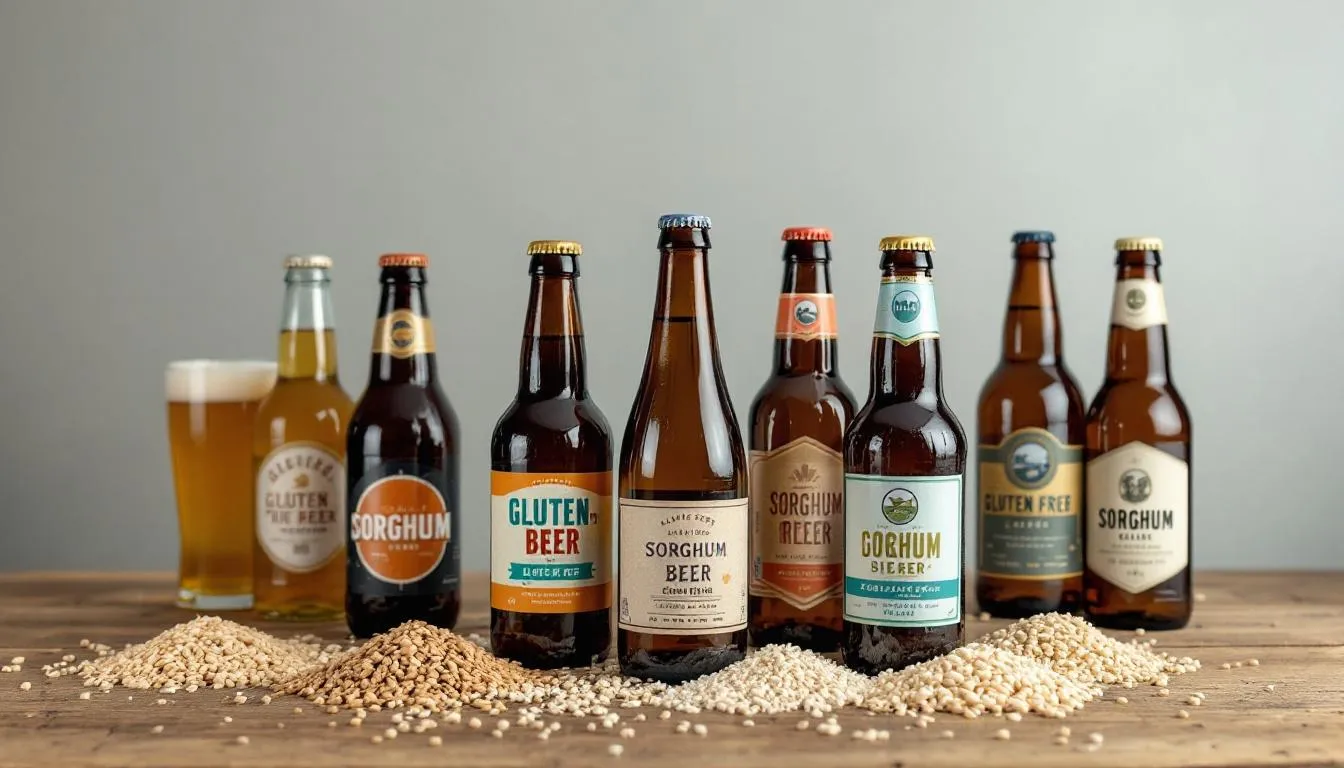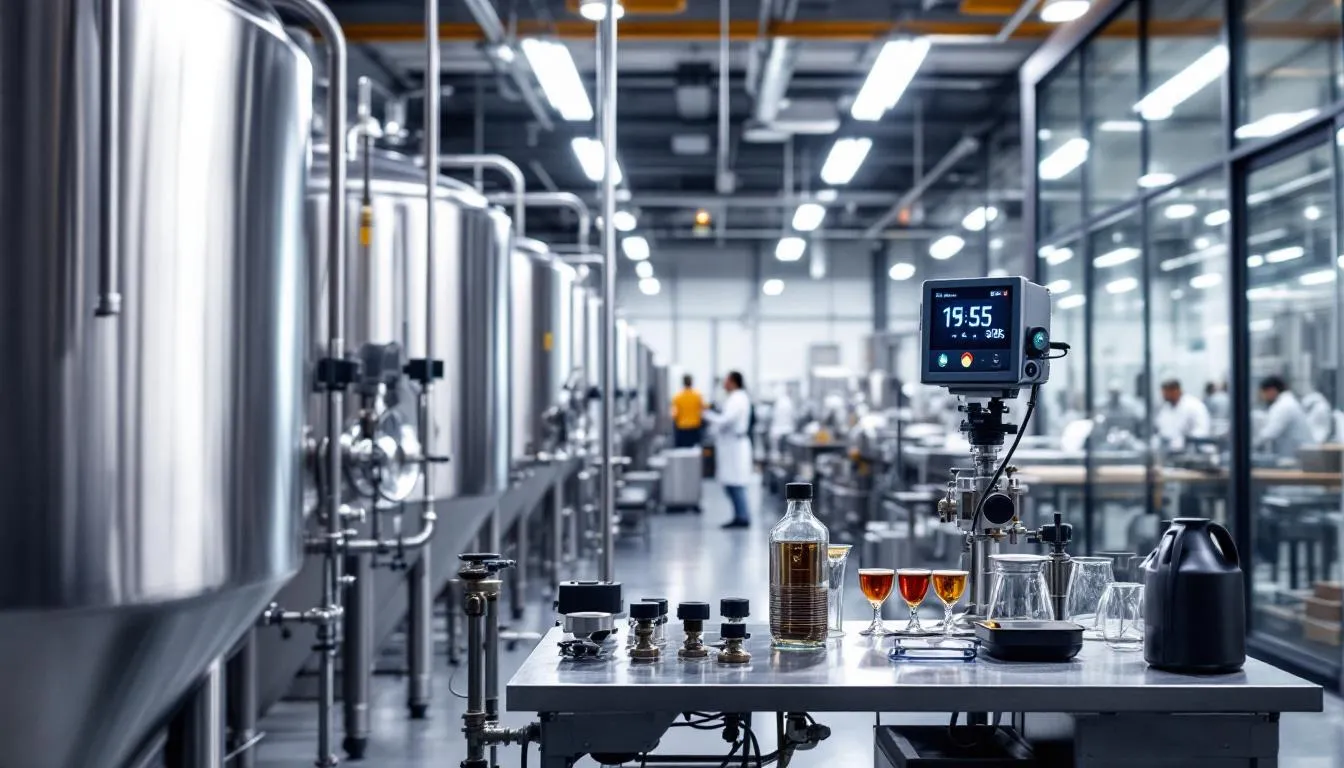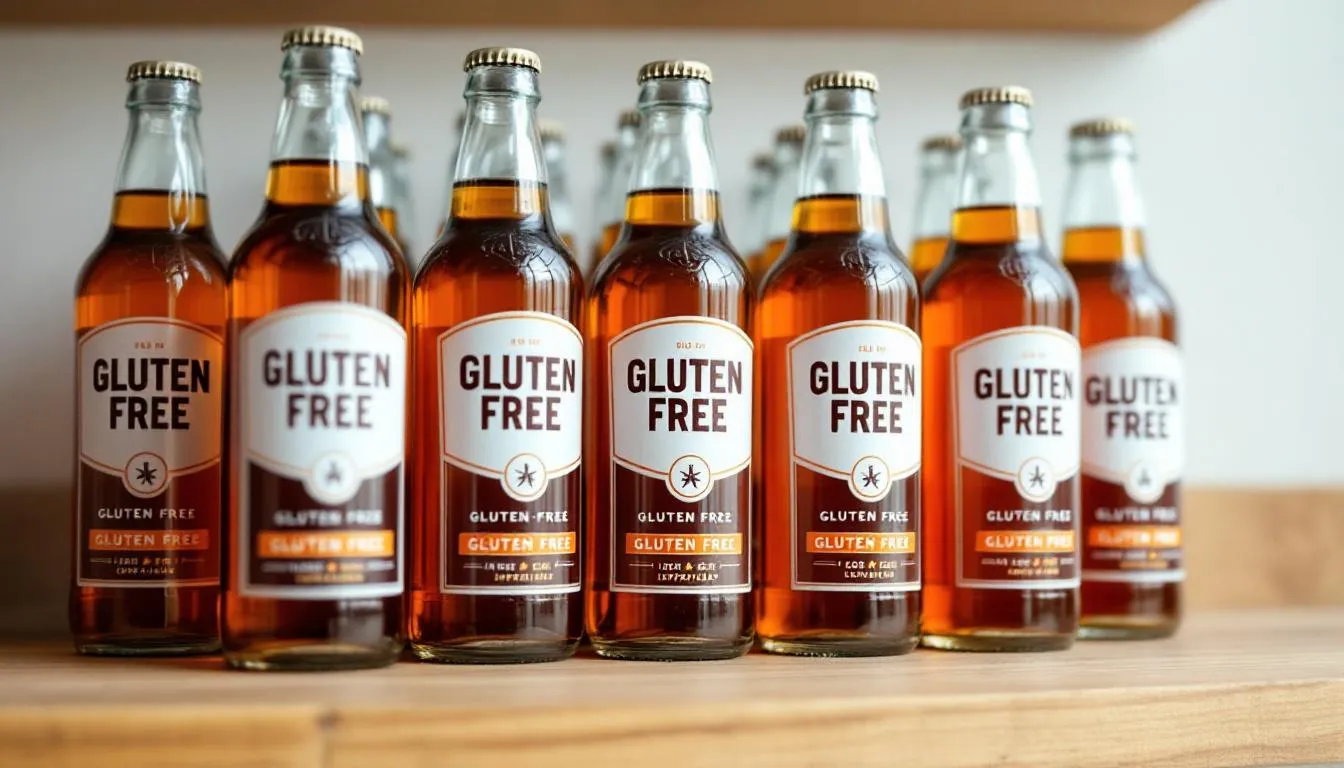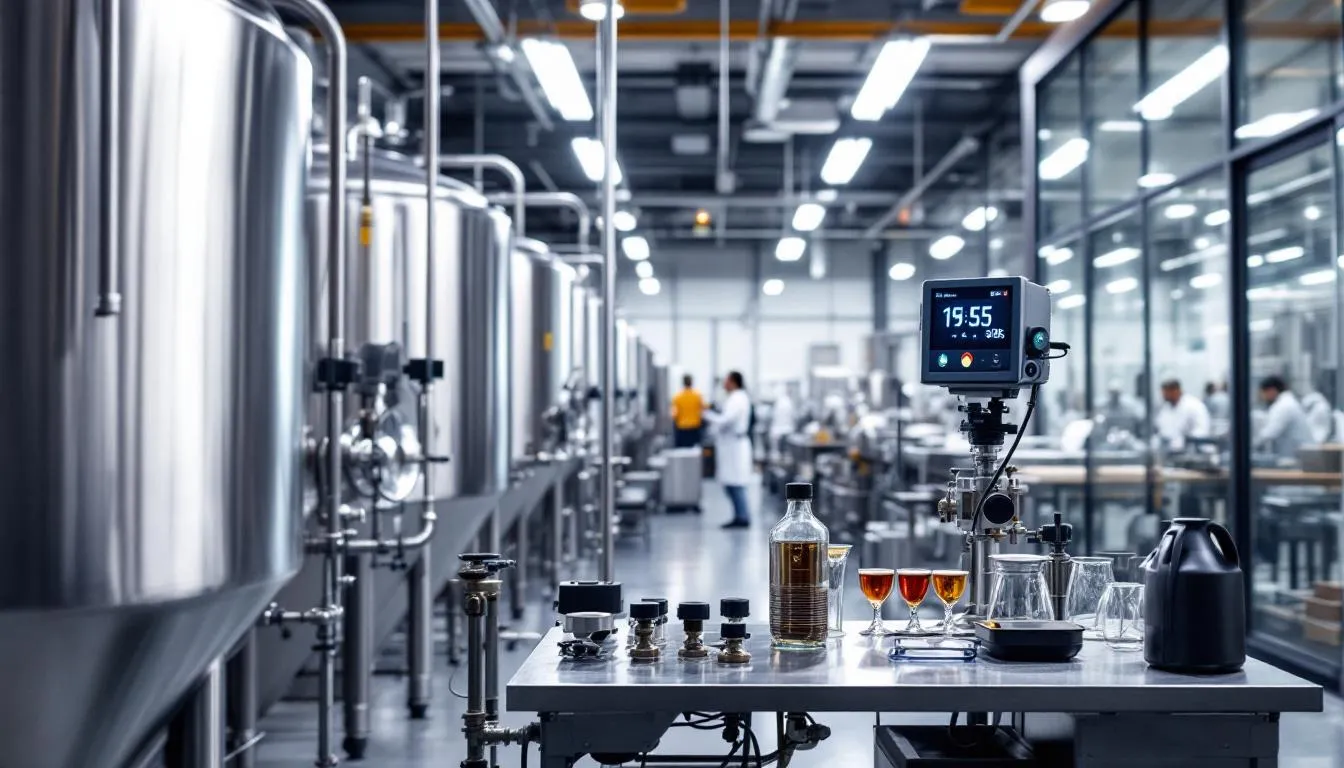Disclaimer: Please seek medical advice and check all labels before consuming. Beerliever cannot take any responsibility for what you consume. Information herein should be treated with the utmost caution.
For the 1 in 100 UK residents living with coeliac disease and millions more following a gluten free diet for health reasons, the question of whether beer can fit into their lifestyle is increasingly important. The good news is that beer and gluten free options have expanded dramatically in recent years, offering safe and delicious alternatives to traditional barley-based brews.
Whether you’re newly diagnosed with gluten intolerance or simply exploring healthier drinking options, understanding the landscape of gluten free beers can transform your social experiences. From naturally gluten free alternatives to enzyme-treated options available in your local supermarket, this comprehensive guide will help you navigate the world of safe beer consumption with confidence.

Can Beer Be Gluten Free?
Yes, beer can be gluten free through two main methods: naturally gluten-free ingredients or gluten removal processes. This represents a significant shift from traditional brewing, where gluten containing grains formed the backbone of every brew.
Traditional beer contains gluten from barley, wheat, and rye used in brewing. These cereals contribute the fermentable sugars essential to the brewing process, but they also introduce gluten proteins that can trigger severe reactions in sensitive individuals.
UK law requires gluten-free labeled beers to contain less than 20 ppm gluten, aligning with European Union standards. This threshold, measured in parts per million, represents the maximum level considered safe for most people with coeliac disease, though individual sensitivity can vary significantly.
Over 50 breweries in the UK now produce gluten free beer options for celiac sufferers, ranging from large commercial operations to specialized craft producers. This growth reflects both increased demand and improved brewing technology that makes gluten free production more viable than ever before.
The regulatory framework ensures that any beer labeled as gluten free has undergone rigorous testing to verify its gluten content. Coeliac UK provides additional certification for products meeting their stricter standards, giving consumers extra confidence in their choices.
Why Traditional Beer Contains Gluten
Barley malt is the primary ingredient in most beers, containing hordein protein that belongs to the gluten family. This protein found in barley provides the enzymatic activity necessary for converting starches into fermentable sugars during the mashing process, making it fundamental to traditional brewing.
Wheat beers like Belgian Witbier and German Hefeweizen contain gliadin, another gluten protein that contributes to the characteristic texture and flavor of these styles. These wheat-based beers often contain significantly higher gluten levels than barley-only brews, making them particularly problematic for sensitive individuals.
Rye adds spicy flavors but contributes secalin, another gluten protein that can trigger reactions in people with coeliac disease affecting 1 in 100 UK residents. While rye is less commonly used than barley or wheat, it appears in specialty beer styles and can cause unexpected reactions in those avoiding gluten.
The fermentation process doesn’t eliminate these gluten proteins; in fact, it can sometimes concentrate them as other components are consumed by yeast. This means that even light beers or those with extended fermentation periods typically retain significant gluten content unless specifically treated or brewed with alternative grains.
Understanding these sources helps explain why simply reducing barley content isn’t sufficient for creating truly safe options for those with gluten intolerance. The protein structure of gluten means that even trace amounts can cause problems, necessitating either complete avoidance of gluten containing grains or sophisticated enzyme treatment to break down the problematic proteins.
Types of Gluten-Free Beer
The gluten free beer market offers three distinct categories, each with unique advantages and considerations for consumers seeking safe alternatives to traditional brews.
Naturally Gluten-Free Beers
Naturally gluten free beers are brewed with sorghum, millet, rice, buckwheat, quinoa, or corn instead of traditional grains. These alternative grains provide the fermentable sugars necessary for alcohol production while completely avoiding any gluten sources from the outset.
This approach represents the safest option for highly sensitive individuals and those with coeliac disease, as there’s no risk of cross-contamination from gluten containing ingredients. The brewing process remains fundamentally the same, but the flavor profiles can differ significantly from traditional barley-based beers.
Examples include Green’s gluten-free range and Celia Lager from Czech Republic, both widely available in UK supermarkets. These products often showcase the unique characteristics of their base grains, with sorghum providing mild sweetness and rice contributing to clean, crisp finishes.
The grain selection dramatically influences the final product’s taste, with buckwheat offering earthy, nutty notes while corn contributes lighter, more neutral flavors. Many brewers combine multiple gluten free grains to achieve complex flavor profiles that rival traditional beer styles.
Production costs for naturally gluten free beers are typically higher due to the specialized ingredients and often lower yields from alternative grains. However, advances in brewing technology and increased demand have made these options more affordable and accessible than ever before.
Gluten-Removed Beers
Gluten-removed beers start with barley but use Brewers Clarex enzyme to break down gluten proteins during fermentation. This enzyme specifically targets the protein chains responsible for triggering immune responses in sensitive individuals, reducing gluten content to measurable levels well below the 20 ppm threshold.
These products must be labeled “contains barley” in UK despite meeting gluten-free standards, providing transparency for consumers who may react to barley-derived proteins even after enzyme treatment. This labeling requirement reflects ongoing scientific uncertainty about whether all potentially harmful protein fragments are completely eliminated.
Popular options include BrewDog Punk IPA GF and many craft brewery offerings that maintain traditional beer flavors while reducing gluten to under 20 ppm. The enzyme treatment process allows brewers to preserve the familiar taste profiles that beer enthusiasts expect.
The advantage of this approach lies in flavor authenticity – these beers taste virtually identical to their gluten containing counterparts because they use the same base ingredients and brewing processes. The enzyme addition occurs during fermentation, requiring minimal changes to established production methods.
Testing requirements for gluten-removed beers are more complex than for naturally gluten free alternatives, as standard testing methods may not accurately detect all potentially problematic protein fragments. An alternative method called R5 Competitive ELISA provides more reliable results for enzyme-treated products.
Dedicated Gluten-Free Facilities
Dedicated gluten-free facilities represent breweries using 100% gluten-free equipment and facilities to prevent cross-contamination. These operations maintain complete separation from any gluten containing ingredients throughout their entire production chain.
This approach is extremely rare in UK but available from specialized producers like Bellfield Brewery, which operates Scotland’s first dedicated gluten free brewery. Their commitment to preventing cross-contamination extends to ingredient sourcing, equipment cleaning, and even staff training protocols.
These facilities provide the highest safety standard for severely sensitive individuals who may react to even trace contamination from shared equipment. The investment required for dedicated facilities explains why so few breweries adopt this approach, but it offers unparalleled peace of mind for consumers.
The range of beer styles available from dedicated facilities has expanded significantly, with producers now offering everything from traditional ales to innovative experimental brews. Modern gluten free brewing techniques allow these specialized breweries to create products that compete directly with conventional beers in terms of quality and variety.
Premium prices reflect the specialized production requirements, but many consumers with severe sensitivities consider the additional cost worthwhile for guaranteed safety. The growing market has attracted investment in new dedicated facilities, promising expanded options in coming years.

How Gluten-Free Beer Is Made
Understanding the production methods behind gluten free beer helps consumers make informed choices about which options best suit their needs and sensitivity levels.
Alternative Grain Brewing
Alternative grain brewing involves substituting barley with gluten-free grains like sorghum, rice, or millet. This process requires different mashing temperatures and fermentation techniques to accommodate the unique properties of each grain type.
Sorghum, the most commonly used alternative, requires higher mashing temperatures than barley to achieve proper starch conversion. The grain lacks the natural enzymes found in malted barley, necessitating the addition of commercial enzyme preparations to break down starches into fermentable sugars.
Rice provides excellent fermentability but contributes minimal flavor, making it ideal for lighter beer styles or as a base for more flavorful adjuncts. Many brewers combine rice with other grains to achieve desired flavor complexity while maintaining the clean finish that rice provides.
The brewing process often combines multiple gluten free grains with adjuncts like corn or tapioca for body and mouthfeel. These additions help recreate the texture and weight that gluten proteins normally provide in traditional beer, ensuring the final product meets consumer expectations.
Hops, yeast, and water remain standard brewing ingredients, allowing brewers to create familiar flavor profiles despite the grain substitutions. The selection and timing of hop additions become particularly important in masking any off-flavors from alternative grains while building balanced bitterness and aroma.
Enzyme Treatment Process
The enzyme treatment process represents a sophisticated approach to reducing gluten content in traditionally brewed beer. Brewers Clarex enzyme, derived from Aspergillus niger, specifically targets proline-rich proteins including those responsible for gluten-related immune responses.
The enzyme is added during fermentation when yeast activity helps distribute it throughout the beer, ensuring thorough contact with gluten proteins. The process breaks gluten protein chains into smaller fragments that are less likely to trigger immune responses in sensitive individuals.
Temperature and pH conditions during fermentation must be carefully controlled to optimize enzyme activity while maintaining normal yeast function. The dual biological processes require precise monitoring to ensure both effective gluten reduction and proper alcohol production.
R5 ELISA Competitive testing method verifies final gluten content, as standard testing methods may not accurately detect the smaller protein fragments created by enzyme treatment. This specialized testing ensures that treated beers meet regulatory requirements for gluten content.
Each batch requires laboratory testing to ensure compliance with UK standards, adding quality control steps that don’t exist in traditional brewing. The additional testing and enzyme costs are typically offset by the ability to use existing equipment and familiar ingredients.
Popular UK Gluten-Free Beer Brands
The UK market offers an extensive range of gluten free beer options, from widely available supermarket brands to specialized craft brewery offerings that showcase innovative brewing techniques.
Widely Available Supermarket Brands
BrewDog Punk IPA GF stands out as one of the most accessible options, available in Tesco, Sainsbury’s, and ASDA stores nationwide. This gluten-reduced beer maintains the hoppy, citrusy character of the original Punk IPA while meeting gluten-free standards through enzyme treatment.
Greene King IPA Gluten Free can be found in most major supermarket chains, offering a traditional English bitter experience for those avoiding gluten. The brewery’s established distribution network ensures consistent availability across the UK, making it a reliable choice for regular consumption.
St. Peter’s Gluten Free beers appear in specialty bottle shops and online retailers, featuring distinctive oval bottles and carefully crafted recipes using alternative grains. Their range includes both light and dark options, providing variety for different taste preferences.
Celia Lager, an imported Czech option, appears in larger Waitrose and Morrisons stores, bringing continental brewing expertise to the UK gluten free market. This naturally gluten free lager demonstrates that quality beer production without gluten is possible on an international scale.
The supermarket availability of these brands has transformed accessibility for consumers following a gluten free diet. Major retailers now dedicate shelf space to gluten free beer sections, often positioned near other free from foods for convenient shopping.
Craft Brewery Options
Bellfield Brewery, based in Edinburgh, operates as a dedicated gluten-free facility producing multiple beer styles from pale ales to stouts. Their commitment to avoiding cross-contamination has earned recognition from Coeliac UK and built a loyal following among safety-conscious consumers.
First Chop Brewing in Manchester offers rotating gluten-free seasonal offerings that showcase creative ingredient combinations and innovative brewing techniques. Their approach demonstrates that gluten free brewing can be as creative and diverse as traditional beer production.
Brass Castle Brewery in Malton specializes in gluten-free IPAs and pale ales that emphasize hop character and aromatic complexity. Their products prove that hoppy beer styles translate effectively to gluten free brewing, maintaining the bold flavors that define these popular styles.
Hambleton Ales from Ripon focuses on traditional English styles made gluten-free, including milds, bitters, and seasonal offerings. Their approach preserves regional brewing heritage while adapting recipes for modern dietary requirements.
The craft brewery sector has embraced gluten free brewing as both a market opportunity and creative challenge. Many producers now offer at least one gluten free option, with some dedicating significant portions of their production to these specialized products.

Gluten Content and Health Considerations
Understanding gluten content measurements and individual health considerations is crucial for making safe choices when selecting beer options for a gluten free diet.
The UK legal standard of 20 ppm represents the maximum gluten content allowed for products labeled as gluten free, though naturally occurring levels in traditional beer typically range from 10,000 to 25,000 ppm. This dramatic reduction demonstrates the effectiveness of both alternative grain brewing and enzyme treatment processes.
Individual sensitivity to gluten varies significantly among people with coeliac disease, non-celiac gluten sensitivity, and wheat allergies. While 20 ppm is considered safe for most individuals, some people may experience symptoms even at these low levels, particularly with enzyme-treated products.
The difference between coeliac disease and gluten intolerance affects product choice recommendations. Coeliac disease involves an autoimmune response that can cause intestinal damage even from trace gluten exposure, while non-celiac sensitivity typically involves less severe reactions without permanent tissue damage.
Recent years have seen increased awareness of these conditions, leading to better testing methods and more conservative recommendations from health professionals. The protein components that trigger reactions can persist even after enzyme treatment, though in much smaller quantities than original gluten levels.
Healthcare provider consultation is essential for individuals with severe sensitivities, as medical professionals can provide personalized guidance based on individual health history and sensitivity levels. Regular monitoring may be recommended for those with coeliac disease to ensure dietary compliance isn’t causing ongoing health issues.
Shopping and Drinking Guide
Navigating the practical aspects of purchasing and consuming gluten free beer requires understanding labeling, venue policies, and safety considerations for various consumption scenarios.
What to Look for on Labels
“Gluten Free” certification symbols from Coeliac UK provide additional assurance beyond basic regulatory compliance, indicating products that meet stricter testing standards and manufacturing protocols. These symbols represent voluntary certification that goes beyond minimum legal requirements.
“Contains Barley” warnings on enzyme-treated beers alert consumers to potential sensitivity issues even when gluten content meets legal standards. This labeling requirement ensures transparency about ingredients that might cause reactions in highly sensitive individuals.
Third-party testing certifications and batch numbers on labels indicate rigorous quality control processes and provide traceability if concerns arise. Some producers include specific ppm measurements or testing method information for additional consumer confidence.
Ingredient lists showing alternative grains used help consumers identify products that align with their taste preferences and dietary restrictions. Understanding base grain combinations allows for better selection of beers that complement individual flavor preferences.
The label information becomes particularly important when trying new brands or styles, as the gluten free beer market continues expanding with new products and producers entering regularly. Reading labels carefully helps avoid unexpected ingredients or processing methods.
Pub and Restaurant Guidance
Questions to ask bartenders about draught gluten-free options should include inquiries about dedicated beer lines and cleaning protocols to prevent cross-contamination. Many venues use shared lines for multiple beer types, potentially compromising the safety of gluten free options.
Cross-contamination risks from shared beer lines represent a significant concern in pub environments, where cleaning between different beer types may not eliminate all traces of gluten containing products. Understanding venue policies helps consumers make informed decisions about ordering.
Bottled versus draught safety considerations favor bottled options for highly sensitive individuals, as bottles provide better assurance of product integrity from brewery to consumption. Draught systems introduce additional variables that can compromise safety.
Popular pub chains offering gluten free beer menus include Wetherspoons and Greene King pubs, which have established policies and training programs for serving gluten free customers safely. These chains often maintain lists of available options and staff training on cross-contamination prevention.
The advice for pub visits should include checking whether venues have dedicated gluten free menus and asking about staff training on allergen management. Many establishments now take allergen management seriously, but policies and implementation can vary significantly between locations.

Understanding the relationship between beer and gluten free options opens up a world of possibilities for those following restrictive diets. From naturally gluten free brews using innovative grain combinations to enzyme-treated options that preserve traditional flavors, the market now offers solutions for every preference and sensitivity level.
The key to successful gluten free beer consumption lies in understanding your individual needs, reading labels carefully, and choosing products from reputable producers who prioritize safety and transparency. Whether shopping at your local supermarket or exploring craft brewery offerings, the range of high-quality options continues expanding.
For those with coeliac disease or severe gluten sensitivity, consulting with healthcare providers about suitable options remains essential. The combination of improved brewing technology, better testing methods, and increased awareness has created an environment where gluten free beer can be both safe and enjoyable.
The future of gluten free brewing looks promising, with continued innovation in both ingredients and processes. As demand grows and technology improves, consumers can expect even better options that rival traditional beers in both safety and taste.


Leave a Reply